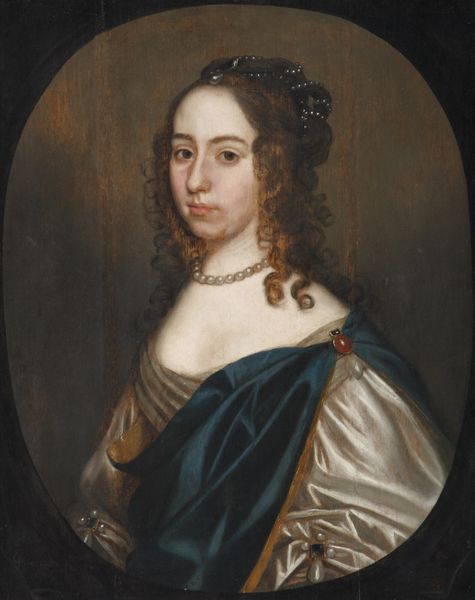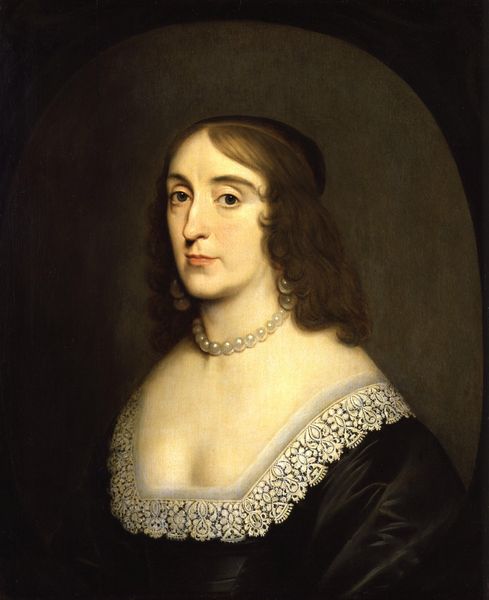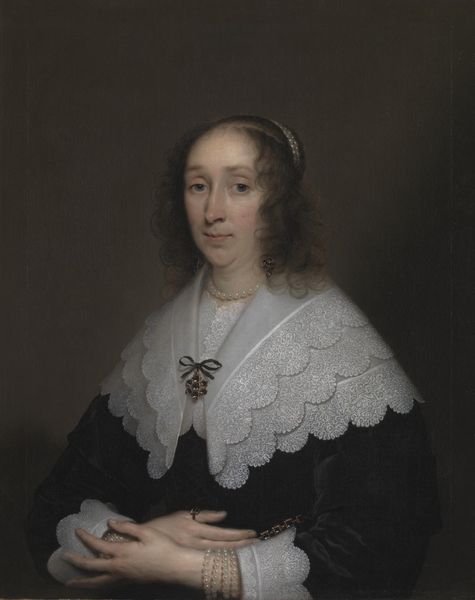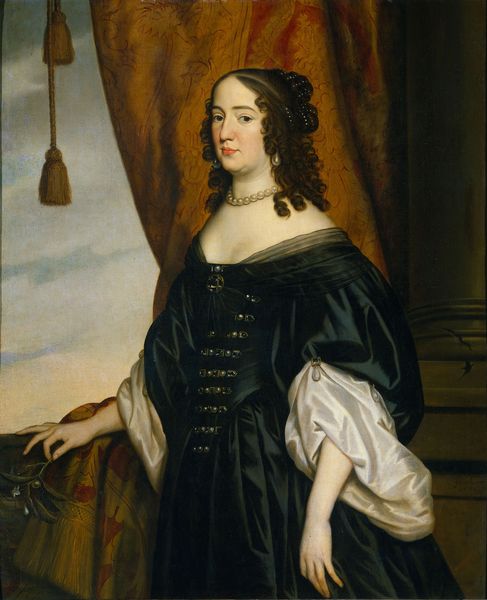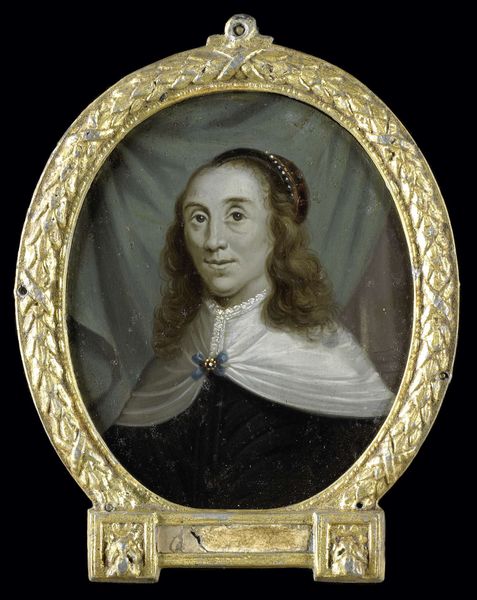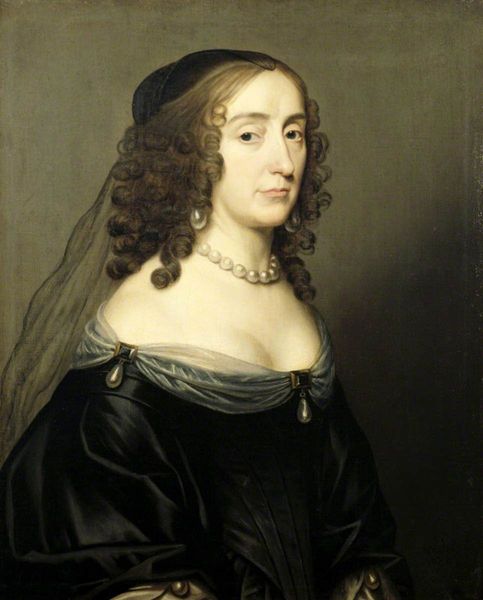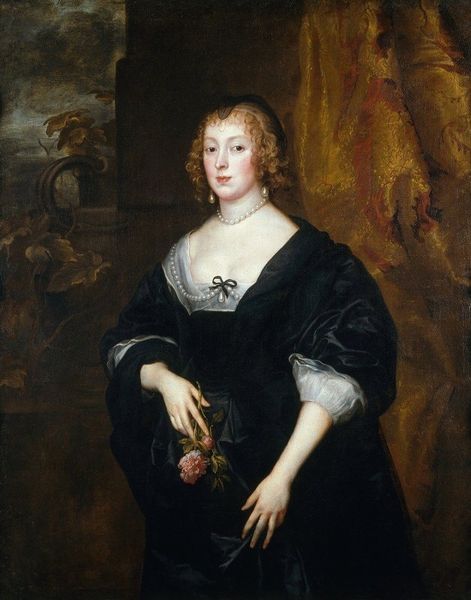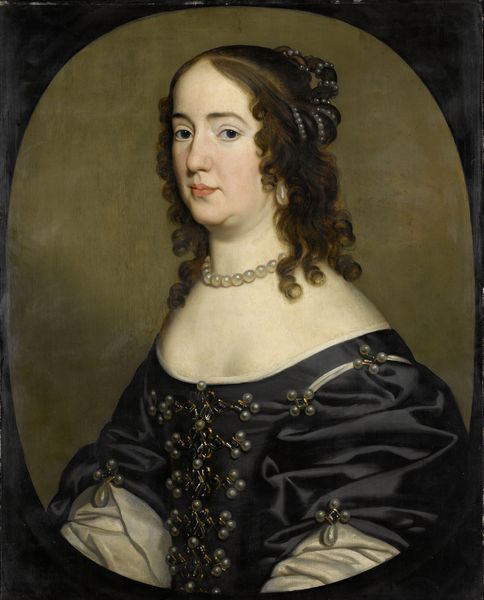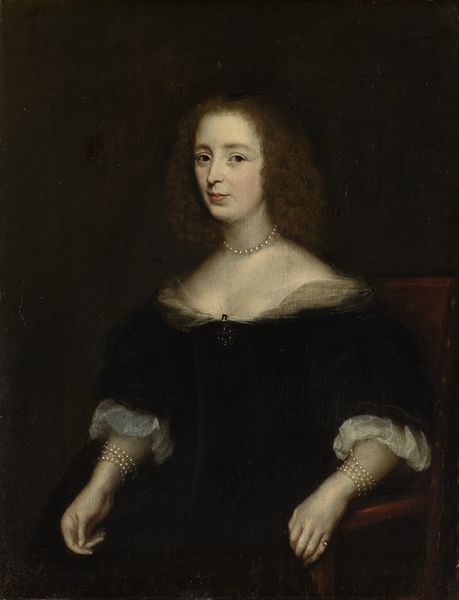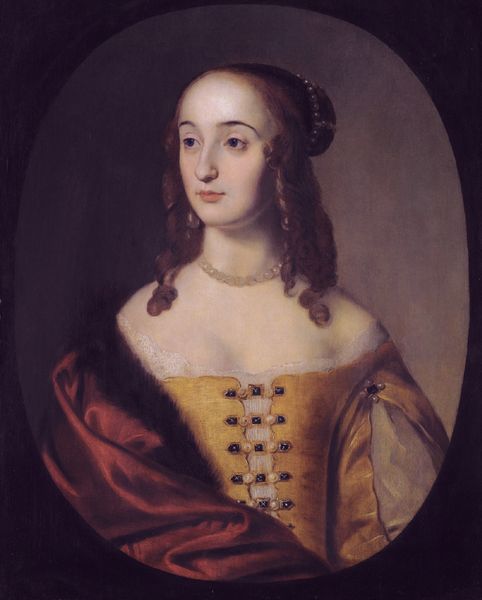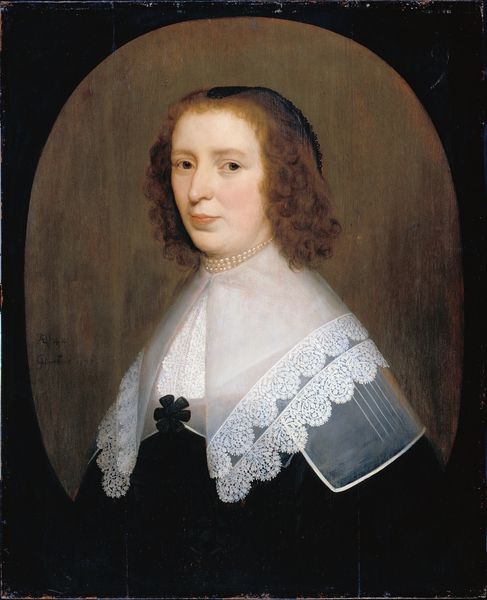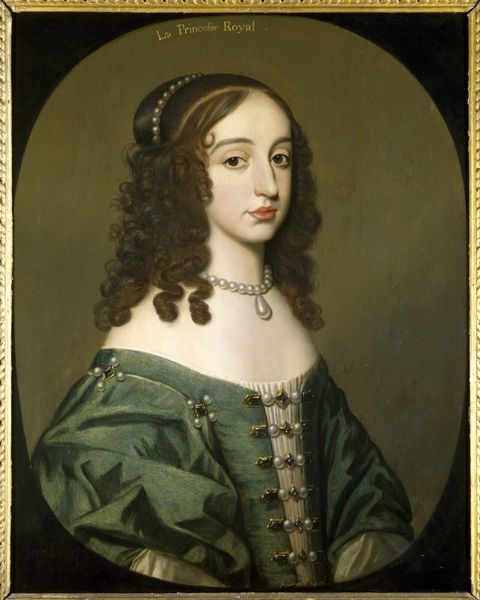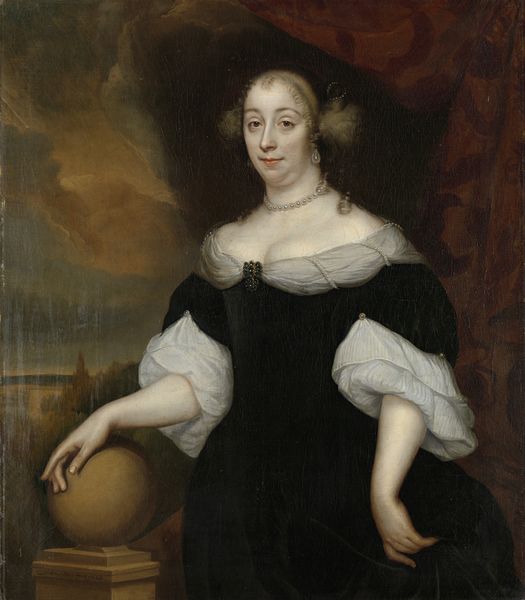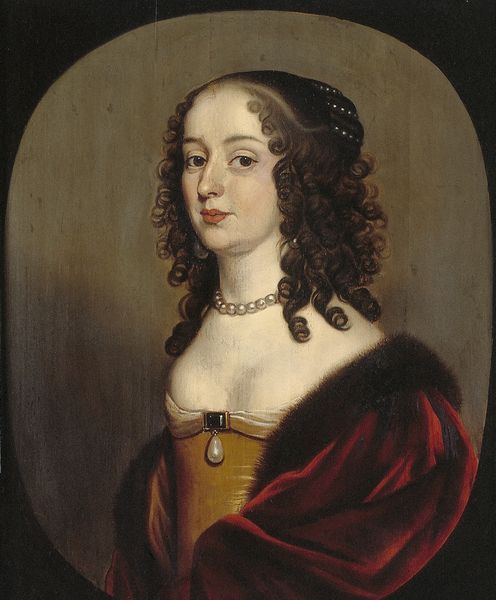
Dimensions: support: 794 x 641 mm frame: 998 x 840 x 90 mm
Copyright: CC-BY-NC-ND 4.0 DEED, Photo: Tate
Editor: Here we have Cornelius Johnson's "Portrait of an Unknown Lady," held at the Tate. It's quite striking with its dark background and the subject's pale face. How does this portrait reflect its cultural context? Curator: Johnson was a key figure in introducing a more refined, European style to portraiture in England. The sitter’s restrained pose and the emphasis on luxurious fabrics and jewelry signal her social standing. This wasn't just about capturing a likeness; it was about projecting an image of status and belonging within a specific social hierarchy. What message do you think this sends to the viewers of the time? Editor: It definitely says that the sitter has a position in society. It's fascinating how much a portrait can communicate about the subject's world. Curator: Exactly! It's a window into the politics of imagery and the public role of art in shaping perceptions of identity and power.
Comments
tate 7 months ago
⋮
http://www.tate.org.uk/art/artworks/johnson-portrait-of-an-unknown-lady-n02530
Join the conversation
Join millions of artists and users on Artera today and experience the ultimate creative platform.
tate 7 months ago
⋮
The artist Cornelius Johnson was born in London in 1593. His family were exiles from Antwerp, though of German descent. He was probably trained in the Netherlands, but became a prolific painter of portraits and miniatures in England. He was made one of Charles I's official painters in 1632.In 1643 civil war caused Johnson to take his family to the Netherlands, where he stayed until his death. In 1646, when this portrait was painted, he was in Amsterdam. His style here echoes that of van Dyck, whose paintings had made such a powerful impact in England. Gallery label, April 2007
